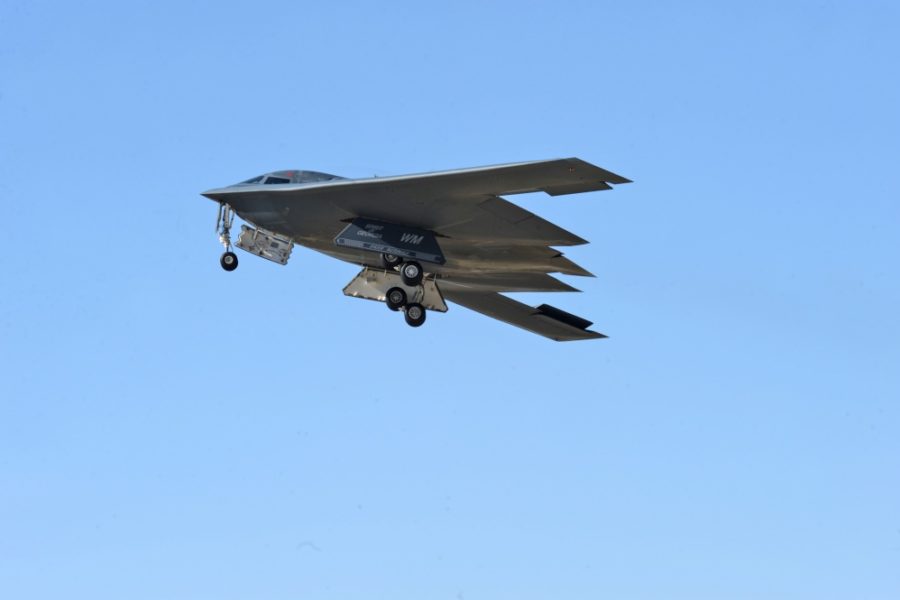The B-2 is a stealthy, long-range, penetrating nuclear and conventional strike bomber. It is based on a flying wing design combining low observability (LO) with high aerodynamic efficiency. The aircraft’s blended fuselage/wing holds two weapons bays capable of carrying nearly 60,000 lb in various combinations.
Spirit entered combat during Allied Force on March 24, 1999, striking Serbian targets. Production was completed in three blocks, and all aircraft were upgraded to Block 30 standard with AESA radar. Construction was limited to 21 aircraft due to cost and political considerations and a single B-2 was subsequently lost in a crash at Andersen on Feb. 23, 2008.
Modernization is focused on safeguarding the B-2A’s penetrating strike capability in high-end threat environments and integrating advanced weapons. Recent upgrades significantly enhance the B-2’s ability to deliver precision nuclear and conventional weapons under GPS-denied or degraded conditions. The aircraft is now capable of using radar to supply targeting data, or by feeding coordinates to weapons pre-release to thwart jamming.
A B-2A successfully employed the longer-range JASSM-ER cruise missile in a test launch last December, clearing the way for full integration. Ongoing efforts include Advanced Communications upgrades to provide Mobile User Objective System (MUOS) secure, jam-resistant SATCOM and NATO-interoperable SATURN UHF/VHF as well as Link 16-based inflight retasking, replacing the primary cockpit displays, advanced IFF, and weapons integration. These upgrades collectively shift the B-2 to an easily upgradable open-system architecture to keep pace with emerging threats.
USAF is also working to enhance the fleet’s maintainability with LO signature improvements to coatings, materials, and radar-absorptive structures such as the radome and engine inlets/exhausts.
The fleet returned to flight in May 2023 following a six-month fleetwide stand-down in the wake of a pair of landing accidents in 2021 and 2023, which severely damaged two aircraft. USAF plans to retire the fleet once the B-21 Raider enters service in sufficient numbers around 2032.
Contractors: Northrop Grumman; Boeing; Vought.
First Flight: July 17, 1989.
Delivered: December 1993-December 1997.
IOC: April 1997, Whiteman AFB, Mo.
Production: 21.
Inventory: 20.
Operator: AFGSC, AFMC, ANG (associate).
Aircraft Location: Edwards AFB, Calif.; Whiteman AFB, Mo.
Active Variant: •B-2A. Production aircraft upgraded to Block 30 standards.
Dimensions: Span 172 ft, length 69 ft, height 17 ft.
Weight: Max T-O 336,500 lb.
Power Plant: Four GE Aviation F118-GE-100 turbofans, each 17,300 lb thrust.
Performance: Speed high subsonic, range 6,900 miles (further with air refueling).
Ceiling: 50,000 ft.
Armament: Nuclear: 16 B61-7, B61-12, B83, or eight B61-11 bombs (on rotary launchers). Conventional: 80 Mk 62 (500-lb) sea mines, 80 Mk 82 (500-lb) bombs, 80 GBU-38 JDAMs, or 34 CBU-87/89 munitions (on rack assemblies); or 16 GBU-31 JDAMs, 16 Mk 84 (2,000-lb) bombs, 16 AGM-154 JSOWs, 16 AGM-158 JASSMs, or eight GBU-28 LGBs.
Accommodation: Two pilots on ACES II zero/zero ejection seats.
